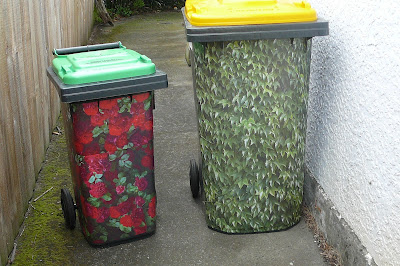Why the Avonside Orange Zone went Red
In this morning's Press there is an article headlined Homes could have been saved (here) and starts off:
The decision to make the Avonside Orange zone Red was the result of a recommendation from CERA. It is contained in a Ministerial Report which can be downloaded from here.
Unlike earlier land zoning decisions, the reasons for the recommendation are given in full, which would have required extra effort on the part of CERA staff. As someone affected by the decision, to be able to see exactly what was taken into consideration makes the process much more transparent and easier to understand. That extra effort is appreciated.
I have summarised the reasons for the decision below, and they can be found in full on page 21 of the Ministerial Report.
.
The article is, shall we say, light on analysis and not particularly accurate. In particular the cost of remediation is wrong. The writer states:More than 500 quake-hit properties which could have been affordably fixed were instead written off, Cabinet papers say.
Documents released by the Canterbury Earthquake Recovery Authority (Cera) show hundreds of properties in Brooklands, Avonside and Wainoni may have been "cost-effective" to repair.
The papers also estimated 133 Avonside properties around Cowlishaw St and Retreat Rd would cost from $4.8m and $6.7m to fix, less than half what the properties would eventually be worth.
which is a load on nonsense. The dollar figures in the Ministerial Report are the net cost of remediating the land, and these amounts are an under-estimate of the total expense because significant associated costs are omitted. Consequently the overall cost would potentially be in excess of the land value.
Had the writer read the remediation criteria agreed by Cabinet, he would have understood that money was not the only factor. People count too, and the criteria include timeliness, and adverse impacts on health and well-being.
For a better analysis on why the Avonside Orange Zone went Red click the link to read more.
The decision to make the Avonside Orange zone Red was the result of a recommendation from CERA. It is contained in a Ministerial Report which can be downloaded from here.
Unlike earlier land zoning decisions, the reasons for the recommendation are given in full, which would have required extra effort on the part of CERA staff. As someone affected by the decision, to be able to see exactly what was taken into consideration makes the process much more transparent and easier to understand. That extra effort is appreciated.
I have summarised the reasons for the decision below, and they can be found in full on page 21 of the Ministerial Report.
- The extent of damage across Avonside is comparable with the residential Red zones (for example, an estimated 58% of properties are classified as rebuild). The estimates of the cost-effectiveness of area-wide land remediation put the expected net cost in the range of $4.820m to $6.679m
- These figures only consider the direct net cost of remediating the land. There are a range of other costs that are not included in the analysis including the cost of temporary accommodation, maintaining the infrastructure in this area long term, and rebuilding houses. Consequently, the figures above are an underestimate of the total cost of remediating the area.
- It is also likely that some property owners would not be able to rebuild without the co-operation of their neighbours and the works required would be intrusive and disruptive. For example, along the Patten Street terrace, houses may need to be demolished and co-ordinated work undertaken across multiple properties before property owners could rebuild.
- Living in this area is also having an adverse impact on the health and well-being of the residents. Residents in this area have particularly poor infrastructure including sewage and storm water.
certainty of outcome for home-owners as soon as practicable; confidence for people to be able to move forward with their lives; confidence in decision making processes (for home-owners, business-owners, insurers and investors); decisions based on the best available information; and having a simple process in order to provide clarity for land-owners, residents, and businesses in those areas.On the basis of the above it was recommended that the Avonside Orange Zone be rezoned Red.
.
